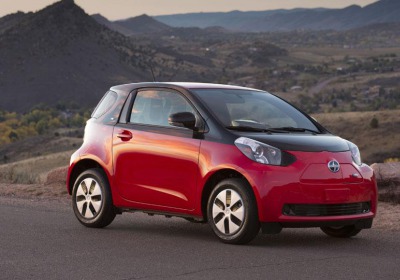2013 Scion iQ EV to join car-sharing programs
Wed, 17 Oct 2012
The diminutive 2013 Scion iQ EV battery-electric vehicle will join car-sharing programs in the United States. The automaker says that details on which car-sharing programs the iQ will join will be announced in the coming weeks.
The iQ EV sports a 12-kilowatt-hour battery, which provides an estimated range of 50 miles on a full charge. It can be fully recharged on a 240-volt outlet in as little as three hours.
Efficiency technologies on the iQ include regenerative braking, heat pump air conditioning and LED lights instead of regular bulbs. The iQ EV has three operating modes. D tells the motor to use the least amount of power, S increases performance for better acceleration and B maximizes regenerative braking.
Output is rated at 63 hp, with a torque rating of 120 lb-ft. In S mode, the car can accelerate to 60 mph in 13.4 seconds, and from 30-50 mph in seven seconds. Top speed is a blistering 78 mph.
“Toyota believes battery-electric vehicles have the potential to play a role in future mobility strategies,” says Chris Hostetter, TMS group vice president of strategic planning. “Up to now, cost and convenience issues have limited BEV's appeal with a broad consumer market."
Hostetter also said that the iQ EV was specifically developed for the urban environment, where charging opportunities are numerous.
Like most EVs, the Scion iQ has no front grille, but uses the space for the car's charging port. The wide rear bumper continues from the standard vehicle, as do the trapezoidal headlights. Only two colors are offered on the EV: silver and red.
The navigation system offers several EV-driving support features. The seven-inch screen can display power consumption and energy flow on half of the screen, while the other half displays a map. An optional range map displays an estimate of the distance the iQ can go on its current charge.
Toyota says about 90 percent of Scion iQ EVs will go to fleets, so don't expect to see too many on the road. The vehicle went into production in September.
By Jake Lingeman

